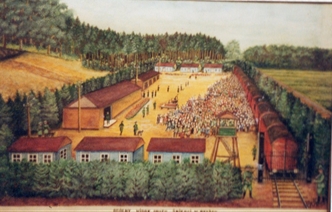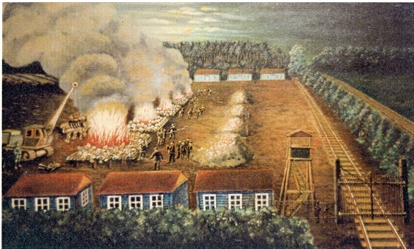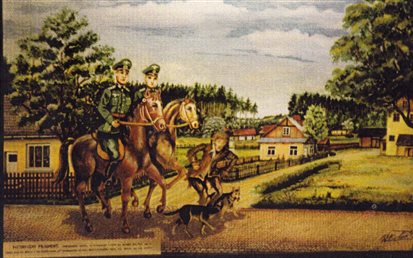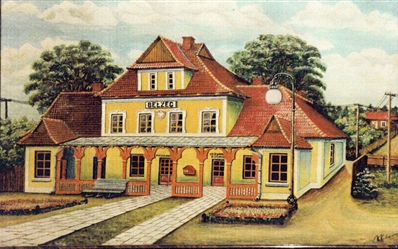Chapter XVII
The Paintings of
Waclaw Kolodziejcyk
During the 1960s, Waclaw Kolodziejczyk, a former railway employee at Belzec station, created six paintings showing the Belzec death camp and the village during the German occupation. He and his family were eye-witnesses to the brutal conditions of the transports, as they passed through the station on the way to the death camp.
Shortly before his death, Waclaw Kolodziejczyk donated the paintings to the local parish church in the Belzec village, four of which are reproduced in this book. It must be stressed that Kolodziejczyk never set foot in the death camp, and the two paintings of the camp were from a combination of second-hand knowledge, along with a degree of artistic licence, and therefore cannot be treated as definitive illustrations. For example, the heavy wooden entrance gate has been replaced by a see-through iron gate:

Belzec Death Camp—Arrival of a Jewish Transport

Belzec Death Camp—Burning of Corpses

The Punishment of Bartlomiej Panasowiec
This painting shows the punishment of Bartlomiej Panasowiec, a resident of Belzec village who was caught by the Germans spying on the camp. Christian Wirth and Gottlieb Hering on horse-back chased him through the village, setting their dogs on him and beating him with whips. Panasowiec was seriously injured but he survived the ordeal, and, as a Ukrainian, he and some of his family were resettled to the Ukraine. It is worth pointing out that the two SS-men were pictured wearing German Army uniforms, which is incorrect.

Belzec Railway Station
This is a fine painting of the old railway station before it was destroyed. On July 5, 1944, a German ammunition train was standing at the Belzec station when it was bombed in an attack by a lone Soviet fighter plane. In the ensuing explosion the station and a number of adjacent buildings were destroyed completely.
All the color reprints are courtesy of the Holocaust Historical Society.